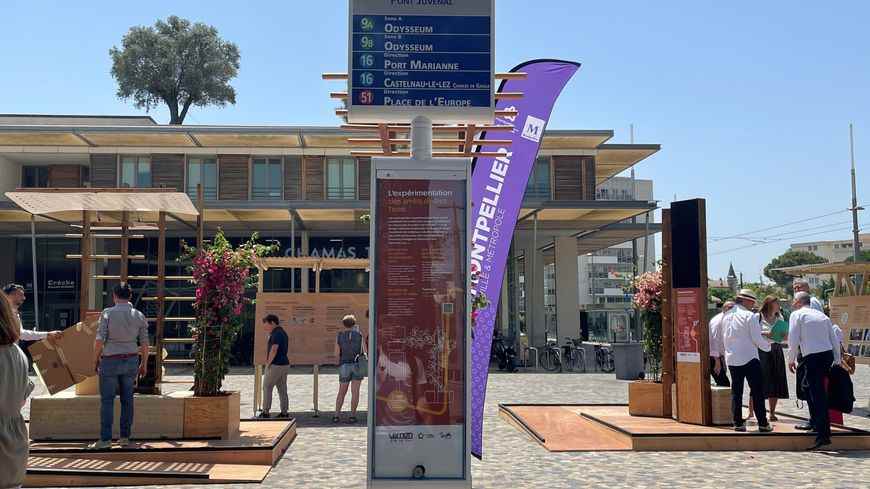You have surely had the painful experience of it, waiting for the bus in full sun is sometimes a real ordeal, especially in these very hot weather. Soon, in Montpellier, it will be over since the city unveiled this Wednesday the first innovative bus stops, called Terra. These are stops created from natural materials, supposed to bring a feeling of freshness to the user. The stops are made with wood, earth from work carried out in Montpellier, ceramic plates, and flowers that will be planted directly on the ground. Stops do not need to be concreted on the ground. Another advantage: thanks to the plastic umbrellas, the stop always offers a place in the shade.
The first inhabitants of Montpellier were able to test these new bus stops on the forecourt of Place Georges Frêche. They are already seduced.
There are 3 types of stops. The autonomous stop, which does not need fixing to the ground, has a pierced partition which provides natural ventilation. A place in the shade is always guaranteed thanks to recycled plastic roofs and the vegetation that surrounds the structure. The Badguir tower, on the other hand, sees black plates placed on top of a wooden tower to suck in the cold air below. Vents are created to give the sensation of freshness at the level of the neck or the head, once seated. Finally, “the post and its second skin” is a wooden structure installed on a traditional bus post. Vegetation grows vertically and offers a shaded corner at any time of the day.
The common point between these three prototypes: a vegetated wooden structure. For Laurent Senigout, general manager of the TAM, the main success of this project is to have succeeded in creating cool areas in small spaces. “There is a big gap between the tram stations and the bus stations. On the tram, we have very nice stations and for the bus, we wait in certain places in full sun.“
With buses that do not pass at the same frequencies, this improves the comfort of users when they take the bus. Laurent Senigout
The other strong point of this project, no rare material was used. For Christophe Tincelin, one of the designers of the project, we are no longer betting on high-tech, but low-tech. Emphasis was placed on ancestral techniques for making the bus stops. “We chose to go for standard products that are on the market, he explains. The intention was even to go towards no-tech, that is to say 0 technology.
If we really want to meet the challenges of sustainable development, we have to strip all these devices of electronics. It’s waste that we can no longer recycle. Christophe Tincelin
3 types of stops will be displayed until July 1 in front of the Town Hall. They will then be deployed for 2 years, particularly on the Pont Juvenal or in the Millénaire district. A two-year experimentation phase will take place before a massive deployment if successful. Users are invited to give their opinion on these new stops by flashing a QR Code present on the experimental sites.
